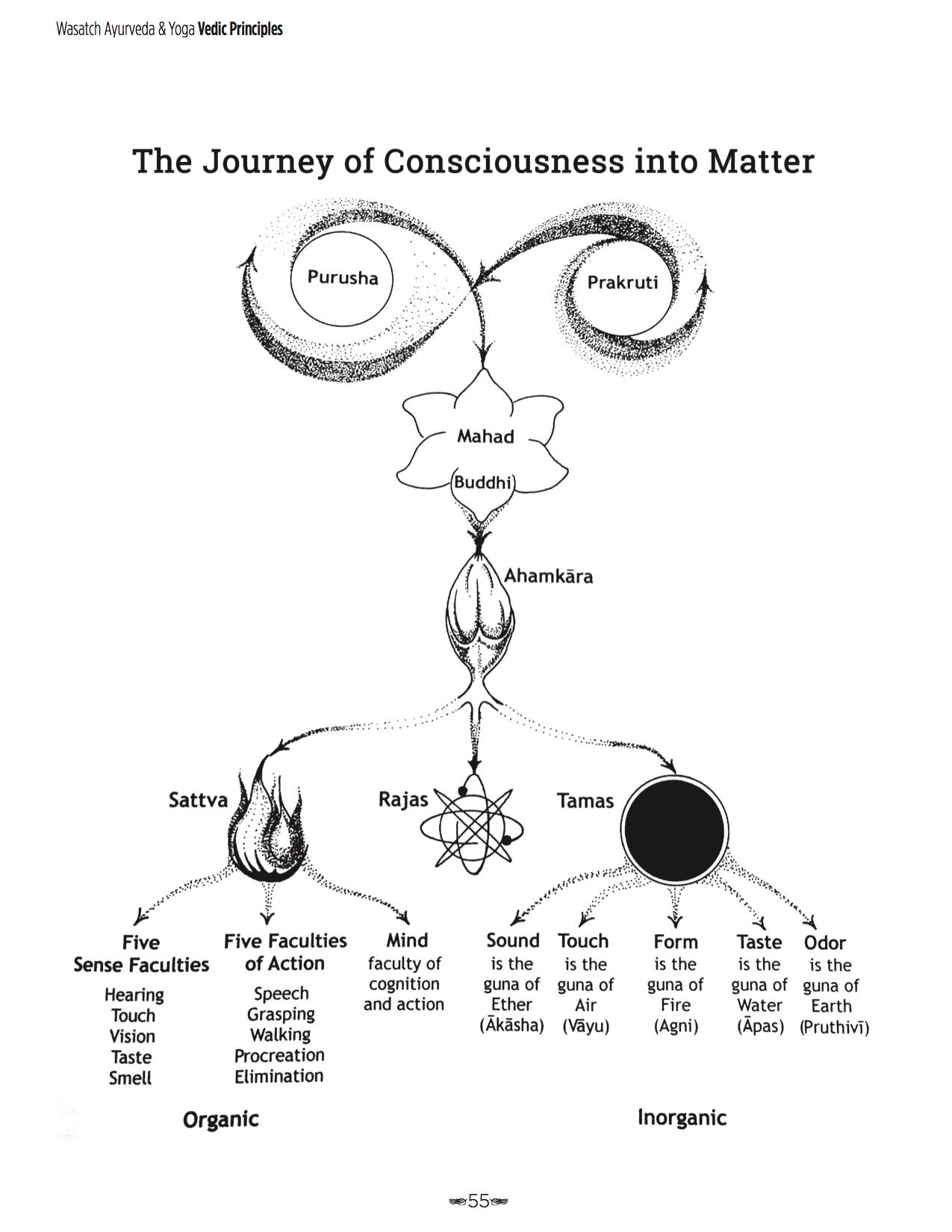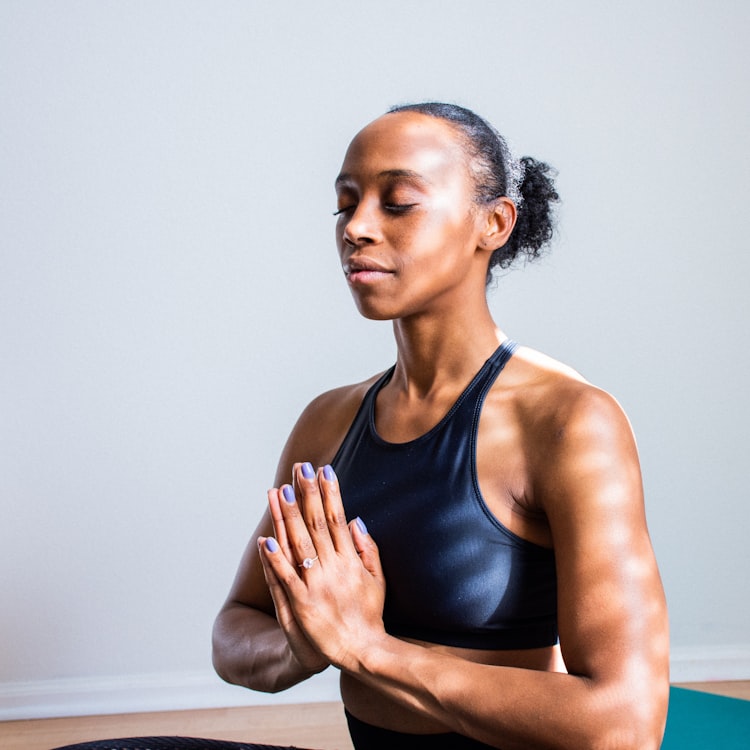Shad Darshan - The 6 Philosophies of Life (Brief Overview)

*The below information is intended to be a brief overview or outline of the 6 philosophies Ayurveda pulls from. I have taken direct lines from the Textbook of Ayurveda: Fundamental Principles - Volume 1 by Vasant Lad, Yoga and Ayurveda: Self-Healing and Self-Realization by David Frawley and some handouts from my coursework in the Minnesota Institute of Ayurveda. I used this post as a platform to study from and to track how all philosophies are connected.
The entire Vedic tradition was revealed in meditation to rishis (seers) and passed from Lord Brahma, to Prajapati, to the Ashvin twins, to Lord Indra, to Atreya (who brought it to Earth) and eventually to Agnivesa (who established written form) to Caraka Samhita (who focused on treatment), Susutra Samhita (who focused on surgery) and Ashtanga Hrdaya (who compiled the sutras).
The Vedas are over 10,000 years old. There are four main Vedas:
- Rigveda - Oldest scripture
- Yajurveda - Book of rituals
- Athavaveda - Book of songs
- Samaveda - Book of magic formulas
There are also four secondary Vedas, called Upa-Vedas or subordinate Vedas. Although there is some debate, Dr. Vasant Lad considers Ayurveda to fall within the Upa-Veda category.
Ayurveda incorporates the Shad Darshan (6 systems of Indian Philosophy) into its philosophy. The 6 philosophies, and their founders, (from oldest to most recent) are:
- Sankhya - Founder: Kapila
- Nyaya - Founder: Gautama
- Vaisheshika - Founder: Kanada
- Mimamsa - Founder: Jaimini
- Yoga - Founder: Patanjali
- Vedanta - Badarayana
Philosophies 1 - 3 observe the material world, logical reasoning and cause and effect. Philosophies 4- 6 observe the inner reality and pure philosophy.
Sankhya Philosophy
San = truth, Khya = to realize, know
A philosophy to understand the Truth of life, the manifestation of the Universe from unmanifest to manifest. The unmanifest state is called Avyakta. There are 24 principles, which I will outline below.

Brahman is the creator
- Purusha and Prakruti are in a state of Avyakta, complete union
Purusha - pure Consciousness, ultimate Truth, masculine energy, Shiva
Prakruti - primordial will, matter, creative potential, feminine energy, Sakti
The universe is created when Prakrti looks at Purusha and becomes aware of being aware. With this awareness, the principles below come to form. - Mahat - creative intelligence, has self-awareness
In the individual soul, Mahat becomes Buddhi, where one can discern truth from falsehood. Buddhi is the individual intelligence. - Ahamkara - the ego, the feeling of I am
- Sattva, Rajas & Tamas - 3 universal qualities or gunas
Sattva - pure essence/ right action/ spiritual purpose. Creative. (vast)
Rajas - principle of movement, active. Maintains. (atmosphere)
Tamas - inertia, darkness, confusion. Destroys. (solid substance)
Through rajas, Consciousness becomes matter.
From sattva comes the:
5 - 9. Sense Faculties/ Sense Pathways: Hearing, Touch, Vision, Taste, Smell
10 - 14. Faculties of Action/ Motor pathways: Speech, Grasping, Walking, Procreation & Elimination
The mind: faculty of cognition and action. (not recognized as it own, individual principle)
From Tamas comes the:
16 - 20. Objects of Sensory Perception (Tanmantras): Sound (Shabda), Touch (Sparsha), Form (Rupa), Taste (Rasa), Odor/Smell (Gandha)
21 - 25. Elements (Gunas of the Tanmatras) from subtle to gross: Ether (Akasha), Air (Vayu), Fire (Agni), Water (Apas), Earth (Pruthivi)
Gave Ayurveda the theory of evolution and cause and effect.
Nyaya and Vaisheshika
Nyaya - how to think about the Vaisheshika, logic
Vaisheshika - 9 causative substances (nava karma dravya)
Nyaya
To obtain knowledge through observation and critical logic
3 Sources of non-valid knowledge:
- Samshaya (doubt)
- Bhrama (faulty cognition)
- Tarka (hypothetical argument)
4 Sources of valid knowledge:
- Pratyaksha (perception)
a. ordinary (lakika): using sense organs - hearing, touching, seeing, tasting, smelling
b. extraordinary (alakika): based on association and intuition or "gut thinking" - soul, thought, desire, aversion, pleasure, pain, cognition - Anumana - inference and cognition based on previous experience (find root cause)
- Upamana - relies on comparison, differential diagnosis
- Shabda - verbal testimony
Vaisheshika
Vaisesika is the originator of the atomic theory and was the first to describe the atom. He describes the atoms as the 9 causative substances.
- 5 elements: Ether, Air, Fire, Water, Earth
- Soul (Atman), individual and supreme (jivatman and paramatman)
- Mind (manas) - functioning through the senses and experience
- Time (kala) - movement and change
- Direction (dig) - up, down and lateral movement.
- 10 directions: N, NE, E, SE, S, SW, W, NW, upward and downward
- East: hot, sharp bright, solar enegry
- West: cool, lunar, feminine energy
- North: colder
- South: hotter
Gave Ayurveda logical and sequential thinking.
Mimamsa
To analyze and thoroughly understand the truth.
- Attaining freedom through performance of duty or dharma
- Ritual, duties, discipline, meditation in healing
Gave Ayurveda action, the path of life, freedom.
Yoga
To unite, union.
Patanjali's Yoga Sutra - 8 Limbs of Yoga (to attain enlightenment)
- Yama: 5 restraints or behavioral guidelines
- Niyama: 5 observations or personal disciplines
- Asana: postures
- Pranayama: control of the vital force/ breathing
- Pratyahara: withdrawal of sense
- Dharana: focused attention, single-point awareness
- Dhyana: meditation, contemplation
- Samadhi: spiritual bliss, self-realization
Ayurveda uses Yoga therapeutically.
Vedanta
The ending of knowledge, the merger of the lower self to the higher self. Teaches the knowledge is not the way to a fully realized life.
Gave profound thinking to Ayurveda about the eternal, changeless Brahma.
Buddhism
Later Buddhism was incorporated. Buddhism: right perception, right thinking, right speaking, right conduct, right living, right doing, mindfulness and meditation. In Budddhism there are:
- 4 Noble Truths:
1. Suffering exists
2. There is a cause to suffering
3. There is cessation of suffering
4. There is a means to cease suffering - 12 causes of suffering
- 8 ways to overcome suffering





